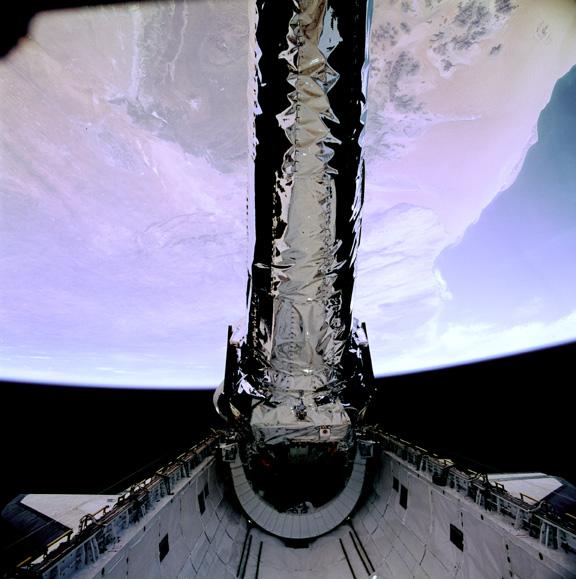Seeing Chandra… From the Ground
It’s been over a quarter of a century since the Space Shuttle Columbia deployed NASA’s Chandra X-ray Observatory into space during mission STS-93. Chandra’s highly elliptical orbit takes it over one-third of the distance to the Moon at its farthest point.

Although Chandra's closest approach to Earth fluctuates extensively with long-term variations in the orbit, it is still typically well more than 600 miles (1000 kilometers) above the surface. Compare that to the International Space Station which orbits our planet at an altitude of about 250 miles, and the Hubble Space Telescope which sits about 320 miles above Earth. It’s clear that Chandra is rather far away from us.
Chandra’s orbit has meant that since the STS-93 astronauts waved goodbye to the telescope on July 23, 1999, no one has been able to get a good look at the Chandra spacecraft. On July 16, 2024, however, amateur astronomer Scott Tilley used a small optical observatory that he built in New Jersey to snap a stream of new images of Chandra that he turned into a short video as it passed overhead, at a distance of 50,000 miles (80,000 kilometers) away!
Credit: Scott Tilley
Scott has been tracking Chandra over the years through radio observations and said Chandra’s “orbit is well placed for optical observations of an object in deep space, which is what I’m building my system to track.” He notes this video of Chandra zooming by represents several hours of data with 5-second-duration frames, and at 120x speed-up.
Thanks to Scott for giving us a glimpse of our beloved Chandra X-ray Observatory in action.
(As an aside, this is not Scott’s first foray in capturing NASA hardware in space. Previously, he helped track down NASA’s IMAGE satellite using his radio observations: https://www.science.org/content/article/amateur-astronomer-discovers-revived-nasa-satellite)
Category:
- Log in to post comments
